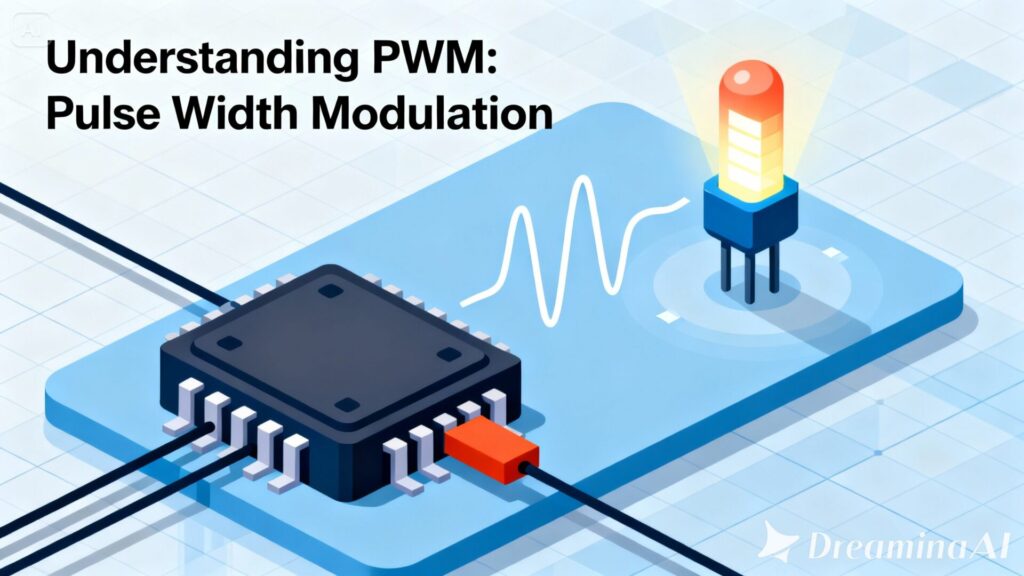Introduction
In the world of electronics and automation, one of the most commonly used types of motors is the stepper motor. Stepper motors convert electrical energy into precise angular movements. With each electrical pulse, the rotor turns by a specific angle. This ability makes them particularly suitable for systems that require exact position control.
What is a Stepper Motor?
A stepper motor is a special type of motor that converts electrical signals into mechanical movements in fixed increments. Unlike conventional motors, the rotor does not rotate continuously but moves step by step, with each electrical pulse representing a “step.”
Example: A stepper motor with a step angle of 1.8° requires 200 steps for a full rotation (360°). This precision makes stepper motors indispensable in printers, 3D printers, CNC machines, and robotic applications.
How Does a Stepper Motor Work?
Stepper motors operate through the interaction between the stator (stationary coils) and the rotor (magnetic structure). The electric current applied to the stator attracts the rotor’s magnetic poles, causing it to rotate by a specific angle.
Basic principle of operation:
- Current flows through the first winding → the rotor aligns with the magnetic poles.
- Current switches to the next winding → the rotor takes a step.
- This process repeats → the motor rotates step by step.
In this way, the motor’s angle can be controlled precisely. This feature makes stepper motors ideal for applications requiring exact positional accuracy.
Types of Stepper Motors
Stepper motors come in various designs. The most common types are:
- Permanent Magnet (PM) Stepper Motor: Cost-effective and simple; mostly used in small devices.
- Variable Reluctance (VR) Stepper Motor: The rotor has a toothed structure. Can operate faster but has lower torque.
- Hybrid Stepper Motor: A combination of PM and VR motors; offers high precision and torque. Commonly used in CNC machines and 3D printers.
Advantages of Stepper Motors
Stepper motors offer several advantages, primarily due to their precise controllability:
- High accuracy: Each step corresponds to a fixed angle. Position is known even without feedback.
- Simple control: Easily controlled using microcontrollers or driver boards.
- Stability: Can operate at low speeds without vibrations.
- Feedback-free: Encoders are not required in many applications.
Disadvantages of Stepper Motors
Despite their advantages, stepper motors also have limitations:
- Limited torque: Torque may decrease at higher speeds.
- Low efficiency: Continuous current draw can cause heating.
- Risk of missed steps: The motor can skip steps under overload.
- Noise: Resonance at certain speeds can cause vibration and noise.
Stepper Motor Drivers
A stepper motor cannot be directly connected to a microcontroller; special drivers are required. Stepper drivers receive control signals and deliver the appropriate current to the motor windings, allowing precise control of speed, direction, and step resolution.
Popular drivers include:
- A4988: Up to 2 A, 16 microsteps, by Allegro Microsystems.
- DRV8825: Up to 2.2 A, 32 microsteps, by Texas Instruments.
- TMC series: Extremely quiet, high precision, advanced microstepping features; e.g., TMC2209 and TMC5160 by Trinamic.
Microstepping divides a full step into smaller steps, allowing smoother, quieter movements. For example, in 1/16 microstep mode, one full step is split into 16 smaller steps, reducing vibration and noise.
Control is usually via STEP and DIR signals, while some TMC drivers support UART or SPI for advanced features.
Applications of Stepper Motors
Thanks to their precision and controllability, stepper motors are essential in many fields:
- 3D printers: Precise layer control.
- CNC machines: Accurate positioning for cutting or drilling.
- Robotics: Precise angular movements in robotic arms.
- Automotive: Displays and control mechanisms.
- Industrial automation: Packaging machines, conveyor belts, production lines.
Stepper Motor vs. Servo Motor
Stepper motors are often confused with servo motors but differ fundamentally:
- Stepper motors usually operate open-loop (without feedback); servos operate closed-loop (with feedback).
- Stepper motors are suitable for low to medium torque applications; servos handle high torque and high-speed requirements.
- Stepper motors are simpler and more cost-effective.
Conclusion
Stepper motors convert electrical pulses into precise angular movements, making them ideal for applications that require exact position control. With the right driver and control setup, they are an indispensable component in modern automation—from 3D printers and CNC machines to robotics and the automotive industry. Their advantages, when balanced against their limitations, make them a central element of modern technology.
🔗 Get in touch with us :
Phone/WhatsApp: +41 76 212 8248
✉️ E-Mail: info@revantechnology.com
For detailed information about our services in electronics development & PCB design:
Revan Technology – Your partner for professional electronics and PCB development
Discover our recent work:
Revan Technology – Our Projects


